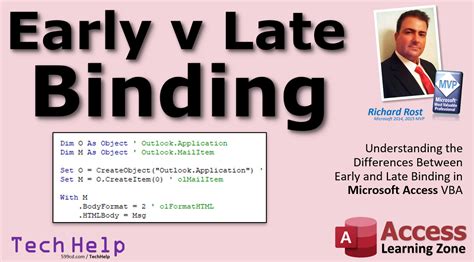Microsoft Outlook and Access are two powerful tools used in many offices for managing emails and databases, respectively. While they serve different purposes, there are situations where you might need to read Outlook emails from Access VBA. This could be to automate tasks, integrate data, or simply to enhance productivity. Here are five ways to achieve this integration:

1. Using Early Binding with Outlook Object Library
One of the most straightforward methods to read Outlook emails from Access VBA is by using early binding with the Outlook Object Library. This method requires you to set a reference to the Outlook Object Library in your Access VBA project.
Steps:
- Open your Access database and press
Alt+F11to open the VBA Editor. - In the VBA Editor, go to
Tools>References, and check if "Microsoft Outlook XX.X Object Library" is listed (where XX.X is the version number of Outlook installed on your system). If it's not checked, check it. - Create a new module and paste the following code:
Sub ReadOutlookEmails()
Dim olApp As New Outlook.Application
Dim olNamespace As Namespace
Dim olMailItem As Object
Dim olFolder As MAPIFolder
Set olNamespace = olApp.GetNamespace("MAPI")
Set olFolder = olNamespace.GetDefaultFolder(olFolderInbox)
For Each olMailItem In olFolder.Items
If olMailItem.Class = olMail Then
Debug.Print olMailItem.Subject
' Process the email as needed
End If
Next olMailItem
Set olFolder = Nothing
Set olNamespace = Nothing
Set olApp = Nothing
End Sub
2. Using Late Binding
Late binding is useful when you don't want to set a specific reference to the Outlook library, or when you're not sure which version of Outlook is installed on the target machine.

Steps:
- The code is similar to early binding, but you declare objects as
Objectand create them usingCreateObject.
Sub ReadOutlookEmailsLateBinding()
Dim olApp As Object
Dim olNamespace As Object
Dim olMailItem As Object
Dim olFolder As Object
Set olApp = CreateObject("Outlook.Application")
Set olNamespace = olApp.GetNamespace("MAPI")
Set olFolder = olNamespace.GetDefaultFolder(6) ' 6 is for Inbox
For Each olMailItem In olFolder.Items
If olMailItem.Class = 43 Then ' 43 is for olMail
Debug.Print olMailItem.Subject
' Process the email as needed
End If
Next olMailItem
Set olFolder = Nothing
Set olNamespace = Nothing
Set olApp = Nothing
End Sub
3. Using Redemption Library
The Redemption library is a third-party library that provides a safer way to automate Outlook from other applications, avoiding the security prompts that can occur with direct automation.

Steps:
- Download and install the Redemption library.
- Reference the Redemption library in your VBA project.
- Use the Redemption library to read emails, similar to using the Outlook library directly.
Sub ReadEmailsWithRedemption()
Dim rdSession As New RDOSession
rdSession.Logon
Dim Inbox As MAPIFolder
Set Inbox = rdSession.GetDefaultFolder(6)
For Each Item In Inbox.Items
If Item.Is졍ail Then
Debug.Print Item.Subject
' Process the email as needed
End If
Next Item
rdSession.Logoff
Set Inbox = Nothing
Set rdSession = Nothing
End Sub
4. Using Extended MAPI
Extended MAPI is a more complex and lower-level interface to Outlook data. It's not as commonly used for reading emails from Access VBA due to its complexity and the need for specific knowledge.
5. Using COM Add-ins or Third-Party Tools
There are various COM add-ins and third-party tools that can provide a simpler interface to read Outlook emails from Access VBA. These can range from commercial libraries to open-source projects.

Steps:
- Research and select a suitable COM add-in or third-party tool.
- Follow the tool's documentation to integrate it into your Access VBA project and read Outlook emails.
Gallery of Outlook and Access Integration
Outlook and Access Integration Images










FAQ
-
How do I read Outlook emails from Access VBA securely?
- Use the Redemption library or Extended MAPI for more secure automation.
-
What is the difference between early and late binding?
- Early binding requires setting a reference to the Outlook library, providing IntelliSense and compile-time checks. Late binding uses
CreateObjectand does not require a set reference, useful for version independence.
- Early binding requires setting a reference to the Outlook library, providing IntelliSense and compile-time checks. Late binding uses
-
How can I process emails in Outlook from Access VBA?
- Loop through the items in the folder, check if the item is a mail item, and then process it as needed (e.g., read the subject, body, sender, etc.).
Feel free to ask more questions or share your experiences with integrating Outlook and Access in the comments below!
